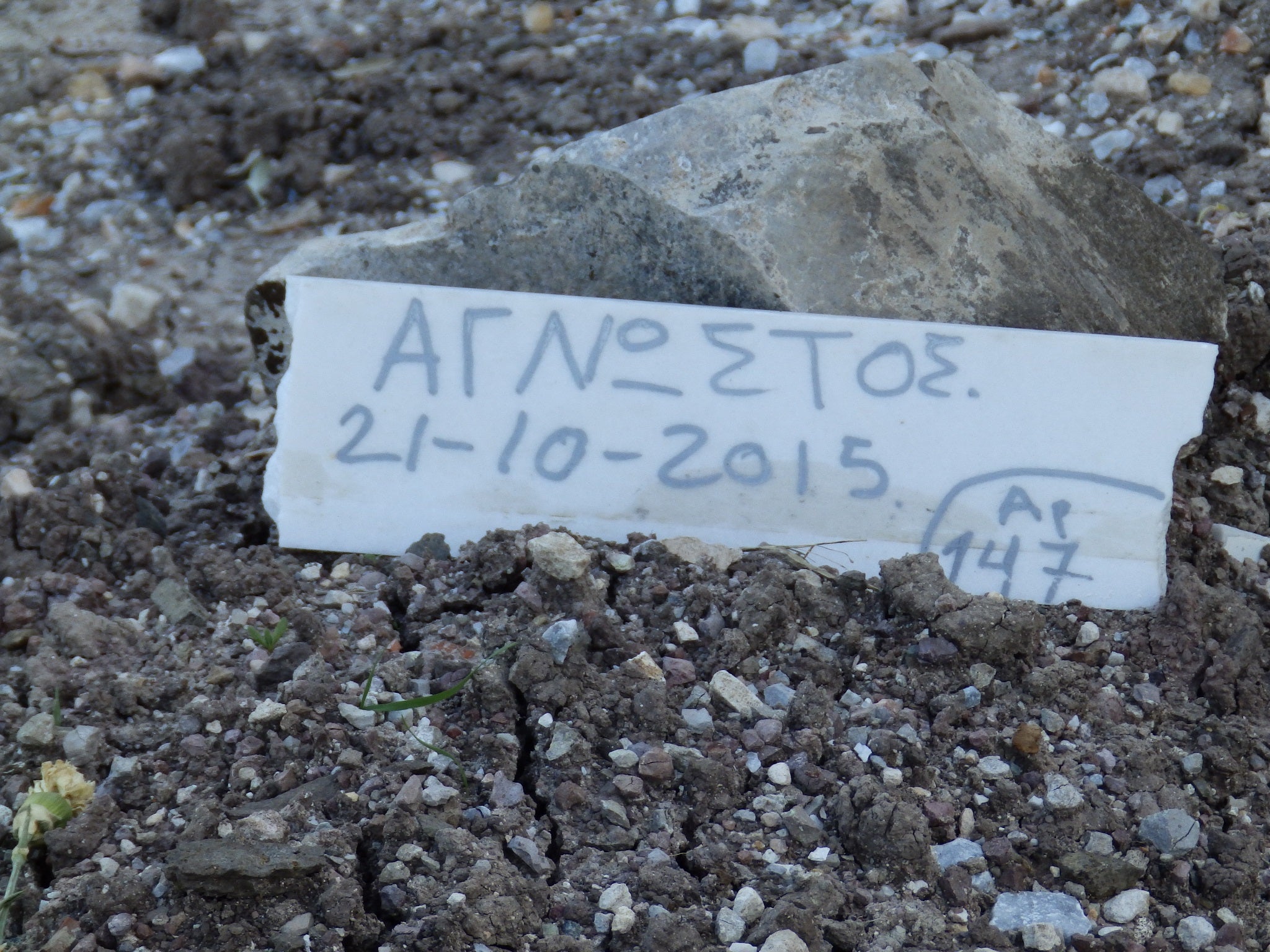Baby among nameless refugees buried in overflowing graveyard in Lesbos as dozens of bodies held in morgue
The main cemetery in Mytilene is full to capacity, forcing authorities to hold 60 bodies in a morgue until they can be buried

“Baby, 2-10-15”, “Unknown, 21-10-15”, “Unknown, 30-9-15”. Those are some of the inscriptions marking the graves of nameless refugees buried on the Greek island of Lesbos.
The Agios Panteleimonas (Saint Panteleimon) cemetery, perched high on a hill overlooking the port city of Mytilene, is the final resting place of asylum seekers who have been drowning in the Aegean Sea since 2006.
But the toll of the crisis overwhelming the island this year has seen the bodies of men, women and children come in at a previously unprecedented rate, filling the consecrated ground.
On Thursday, authorities were knocking down a wall marking the graveyard's historical boundary to allow it to expand. At least 63 refrigerated bodies were being held in the nearby hospital's morgue until they could be laid to rest.
Christos Mavrakidis, the caretaker at Agios Panteleimonas, said volunteers are usually the only witnesses at the refugees' funerals.
Relatives are often unaware of their loved ones' fate or do not know the body has been recovered from the sea, which may happen long after they have left Lesbos for the Greek mainland to continue their journey to western Europe.
“That's a husband and wife,” Mr Mavrakidis said, pointing to two graves laid close together. “There's a mother with her two children over there, that one is a 14-month-old baby.”
Asylum seekers' graves are split into two areas at the back of the cemetary, far from the tree-lined avenues of grand family tombs and marble crosses lovingly maintained by local families.
On one side, five Christian refugees lie in concrete-covered coffins - believed to be a Syrian couple with two children and their grandmother who died in March last year while trying to reach their family in Sweden.
Marble plaques also carry a number denoting their DNA records at the local hospital, in case their remains are claimed in the future.
At the other end of the cemetary is the section for Muslim asylum seekers, buried under earthen mounds facing Mecca, according to Islamic custom.
These graves date back to 2006, when refugees were fleeing from Turkey to Greece to escape the war in Afghanistan.
Mr Mavrakidis estimated that around 70 Afghans are buried in the cemetary, out of 100 refugees in total - a number set to almost double over the coming days as bodies are transferred from the morgue.
The earth is still freshly turned on many of the graves, which bear dates as recent as last week. At least six children are among around 30 burials from this year.
Out of more than 3,400 refugees and migrants who have died in voyages across the Mediterranaen since the start of 2015, around 500 have drowned in the Aegean, according to the International Organisation for Migration.
Many of those died on route to Lesbos, which has been the destination of more than half the 610,000 asylum seekers reaching Greek islands this year.
Local people have been finding bodies on beaches, in harbours and floating at sea still wearing the unreliable life jackets sold in Turkey.
Almost 500 people joined an interfaith memorial service for the dead on Wednesday evening, gathering at the Asia Minor Mother statue by the port in Mytilene at dusk.
The statue marks the island's historical links with migration, commemorating another influx in 1922 as Greek and Armenian refugees fled Turkey.
The mayor, Spyros Galinos, called three days of official morning on Lesbos for the refugees lost at sea before Greek Orthodox, Catholic and Muslim clergy offered prayers.
Kate O'Sullivan, from Save the Children, said aid workers, volunteers, local residents and asylum seekers waiting for ferries off the island all joined the commemorations.
“There's a really strong feeling on the island that they can't have any more people dying,” she told The Independent.
“There's a sadness that is overwhelming people here but also anger that it keeps on happening. There's no end in sight.”
Subscribe to Independent Premium to bookmark this article
Want to bookmark your favourite articles and stories to read or reference later? Start your Independent Premium subscription today.

Join our commenting forum
Join thought-provoking conversations, follow other Independent readers and see their replies